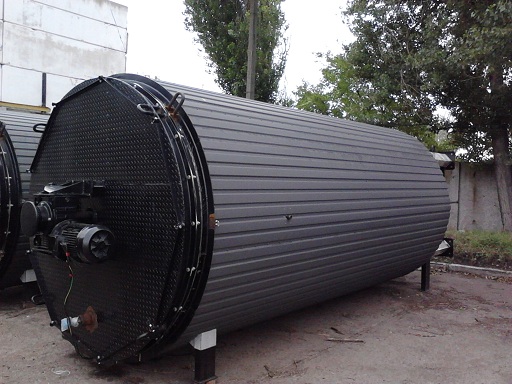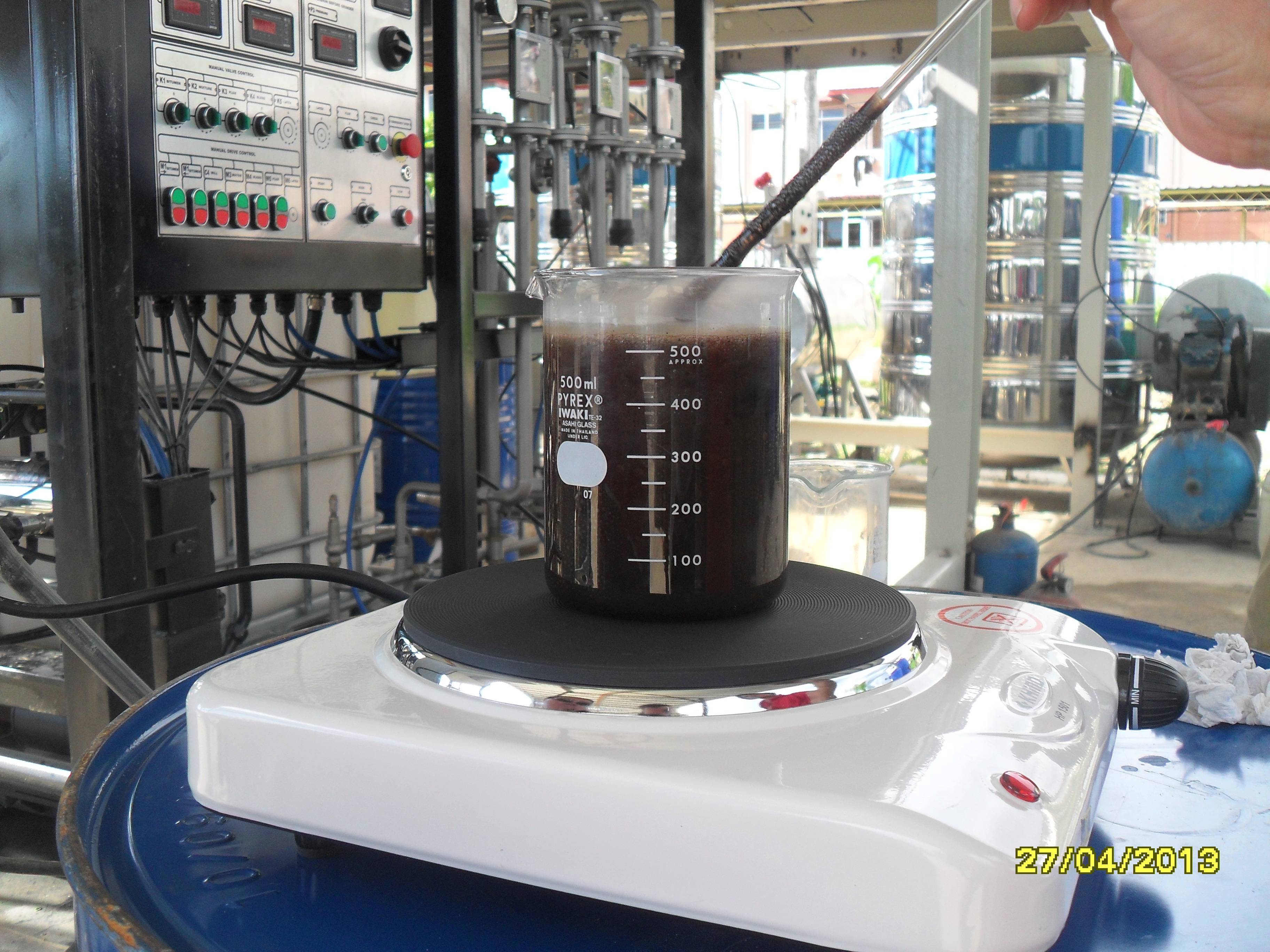Storage and preparation of bitumen on your own company property has a number of advantages for the company. The availability of bitumen boilers allows companies to create and replenish their own stocks of the material without fear of market fluctuations and irregular supply. There are various special containers for storage and heating of bitumen.
GlobeCore offers equipment that is optimally adapted to the technical features of your enterprise.
The basic unit of bitumen complex is bitumohranilische. Its main advantage is that it can be used both as a storage container of asphalt emulsion and as a tank for storing the bitumen-heater.
Bitumohranilische is a “reservoir tank”, i.e. made from 6 mm thick sheet metal.
A horizontal bitumen tank can be used by enterprises that are engaged in the production of asphalt pavements, foundation waterproofing, and concrete structures.
The GlobeCore design department has developed specific solutions for a variety of construction enterprises. Thus, depending on the type of enterprise and the technologies and materials, you can choose the most efficient type of equipment with the minimal expenditure of resources and money.
For example, when installing the burner flame tube as a heating agent, it can use a gas furnace or diesel fuel. As an alternative coolant it can use thermal oil. In this case it is carried out in a special heating boiler. Also for this purpose it can use a MTG-generator with a capacity of 400 thousand. Kcal. This type of equipment is made by our factory and can be delivered to the customer together with the horizontal bitumen tank. Its main advantage over similar equipment is the increased capacity.
The long-term experience of our engineers in the field of mechanical engineering allows us to create and implement technical solutions for enterprises of any complexity. On request, a horizontal bituminous container can be made in two constructive designs depending on which substance is used for heating.
Bitumohranilischa volume depends on the presence or absence of a flame tube and can vary from 28 to 30 m. Cu.
In recent years, there have been industrial trends towards the use of plants for thermal oil. This is due to their efficiency, environmental friendliness and preservation of all necessary requirements for the subsequent operation of the properties of the bitumen. The heating tube uses a temperature not exceeding the boiling temperature of the bitumen, thereby avoiding overheating. In addition, the heat generated by the oil generator can be used to heat all bitumohranilischa consisting of at least 3-4 horizontal tanks.
In the second case, the bitumen may overheat and fall as sludge to the bottom and, consequently, lose its properties. To avoid this, you need to constantly monitor the processes occurring inside the tank. After use, it is necessary to drain the bitumen and to clean the tank itself. It is also worth noting that the bitumen cannot be drained completely (it should at least cover the flame tubes).
Despite the current shortcomings, this type of unit is has also found its application in many companies that use gas or other fuels.
The design department and engineers at GlobeCore constantly improve the technology eliminating all sorts of shortcomings while introducing modern technologies and devices.
Since asphalt is a sufficiently viscous substance, in the container structure there is a special horizontal mixer consisting of three pieces that accelerates the mixing of hot and cold layers of material.
A distinctive feature of our manufactured containers for storage and heating of bitumen is their container structure, ie, mounting dimensions are similar to the dimensions of the “Ocean Going” sea container. This allows us to deliver a horizontal bitumen container via sea transport anywhere in the world.
When transporting the container with a gas burner and the flame tube there is the possibility of removing the last premises in special registers.
In order to put the equipment into working condition, you need to install the flame tube in the original position according to the scheme that is contained in the technical documentation that comes with the equipment.
The range of the horizontal bitumen vessel may include a special pump for feeding the bitumen. This part is also produced by our factory.
Thus, the customer can order a bituminous complex that has been appropriately tested and certified.
Comparative Characteristics of the Technical Data of Various Performance Settings
|
Characteristic
|
Bitumohranilische burner
|
Bitumohranilishte of Thermal
|
| The total volume of the boiler, m. Cube |
32
|
32
|
| The working volume of the boiler, m. A cube |
28
|
28
|
| Type of Heating |
fire
|
Termomaslo
|
| Installed capacity, kW |
|
23
|
| The parameters of the burner |
|
|
| – Rated Power, kW |
430
|
|
| – Maximum power, kW |
540
|
|
| – Fuel |
Natural gas G20
|
|
| – Gas pressure |
20 bar
|
|
| – Maximum flow rate, m. Cc / hr |
38
|
|
| The parameters of the electric current |
380V / 50Hz
|
380V / 50Hz
|
| Dimensions, mm, max. |
|
|
| -length |
11750
|
11750
|
| – width |
2100
|
2100
|
| – height |
2500
|
2500
|
| Weight, no more |
12700
|
12700
|
Questions that you may have:
1. Should the tank and system be constantly filled?
For each type of container, there are differences in the response to this question.
The advantage of using a thermal oil for heating is that the bitumen can be filled and drained from the tank half or even completely. In this case, it will be in working order.
When using the flame tube it is not recommended to drain below their standard substance, as in this case it is possible to have burning bitumen. This may result in a fire the entire system. For reheating it is necessary to fill the tank with new bitumen.
2. How to control the filling?
Installation of the system has certain special devices that includes:
- level sensors (located on the perimeter of the installation);
- Temperature sensors for the upper and lower layer of bitumen;
- overflow sensors (at the top of the unit- are needed to improve the accuracy of measurements).
- backup level sensor;
- overflow pipe.
When triggered, the high level sensor shuts off the pump feeding the material into the bitumen tank. For emergencies, there are special openings for quick drainage of bitumen.
3. In what form is the unit received by the buyer?
The unit is supplied to the customer with the need to separately deliver the gears. In the second part, the burner. Our engineers can visit the area and make the installation and make the unit run and operate properly.
4. The terms of the warranty?
Warranty period – 12 months from date of shipment from the supplier’s warehouse. The manufacturer guarantees the stable operation of the unit if the consumer observes the correct installation, operation, maintenance, transportation and storage.
5. How many operators are necessary for the management of the equipment?
The minimum number of operators during bitumen production is two people.



